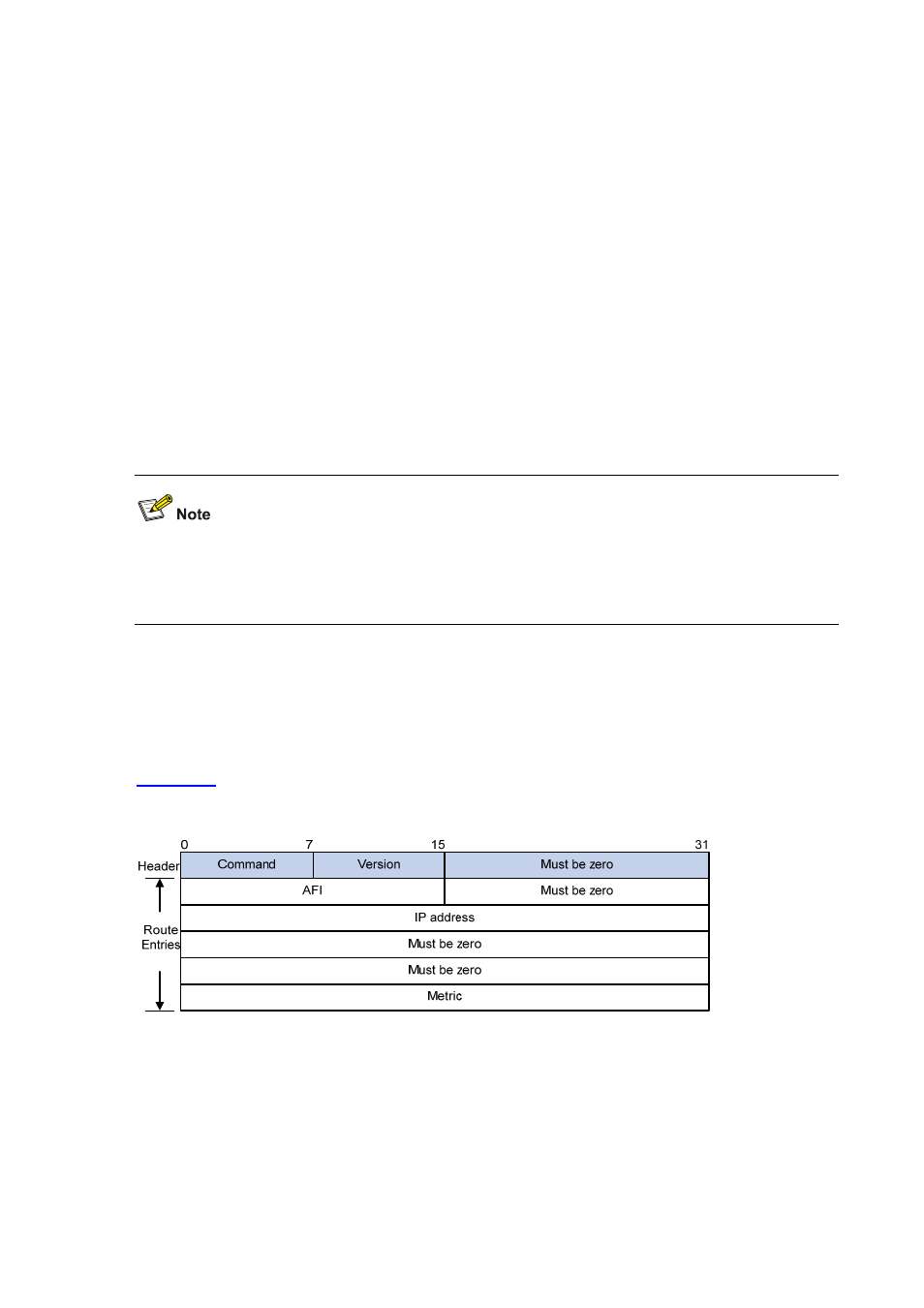Rip version, Rip message format, Ripv1 message format – H3C Technologies H3C WX6000 Series Access Controllers User Manual
Page 221: 3 rip message format

24-3
4) RIP ages out routes by adopting an aging mechanism to keep only valid routes.
RIP Version
RIP has two versions, RIPv1 and RIPv2.
RIPv1, a classful routing protocol, supports message advertisement via broadcast only. RIPv1 protocol
messages do not carry mask information, which means it can only recognize routing information of
natural networks such as Class A, B, C. That is why RIPv1 does not support discontiguous subnets.
RIPv2 is a classless routing protocol. Compared with RIPv1, RIPv2 has the following advantages.
z
Supporting route tags. Route tags are used in routing policies to flexibly control routes.
z
Supporting masks, route summarization and Classless Inter-Domain Routing (CIDR).
z
Supporting designated next hops to select the best next hops on broadcast networks.
z
Supporting multicast routing update to reduce resource consumption.
z
Supporting plain text authentication and MD5 authentication to enhance security.
RIPv2 has two types of message transmission: broadcast and multicast. Multicast is the default type
using 224.0.0.9 as the multicast address. The interface working in the RIPv2 broadcast mode can also
receive RIPv1 messages.
RIP Message Format
RIPv1 message format
A RIPv1 message consists of a header and up to 25 route entries.
shows the format of RIPv1 message.
Figure 24-1
RIPv1 Message Format
z
Command: Type of message. 1 indicates request, and 2 indicates response.
z
Version: Version of RIP, 0x01 for RIPv1.
z
AFI: Address Family Identifier, 2 for IP.
z
IP Address: Destination IP address of the route. It can be a natural network, subnet or a host
address.
z
Metric: Cost of the route.
